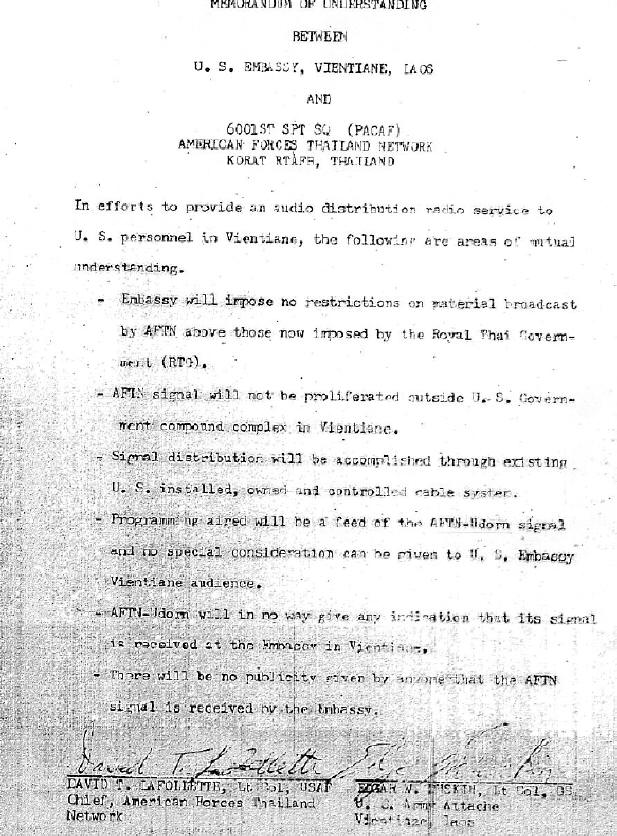
This Is
The American Forces Thailand Network
Secret AFTN Radio Service into Laos
In March, l970, the U.S. Embassy in Vientiane, Laos,
informally requested an ADS system that would feed AFTN to it. As Dick Hiner,
deputy chief of the network at that time, recalls, "the good news was that
there were Marines and other U.S. military at the embassy and I could justify
service from an AFRTS program perspective. The bad news was that the
Laos government had not granted permission and the Thai government had not
approved providing service from their country to another. In a 'it's bettter
to beg forgiveness than ask permission' decision," Hiner approved the Udorn
station to feed a circuit across the river to Vientiane.
Hiner adds that there were sensitivities that the
network adhered to and one was "not to mention that Thailand was supporting
the war in Vietnam. Someone on the ambassador's staff in Vientiane would
call the embassy in Bangkok and complain that AFTN was airing sensitive
information every time they heard a live newscast from the States."
Finally, Hiner had the signal terminated and told the staff in Laos that they
would have to go through channels to have service restored.
After Hiner left Thailand, there was further study about
restoration of the radio service to Laos. On September 1, l970,
Col. LaFollette and Lt. Col. Edgar W. Duskin, GS, U.S. Army Attache
signed a (MOU) Memorandum of Understanding.
Despite their pledge not to interfere with the
operations of the network, at least once in l972 the embassy lodged a
complaint about radio service when the Udorn engineers realigned the microwave
transmitters between Udorn and Ramasun Army station. The test tones generated
by the engineering work interfered with the clandestine transmission
into Laos.
Sources: AFTN Unit History, Jan-Mar, l970,
July-Sept, l970, AFHRA, Maxwell AFB, AL
Brass Button Broadcasters by Trent Christman, pg.
120


